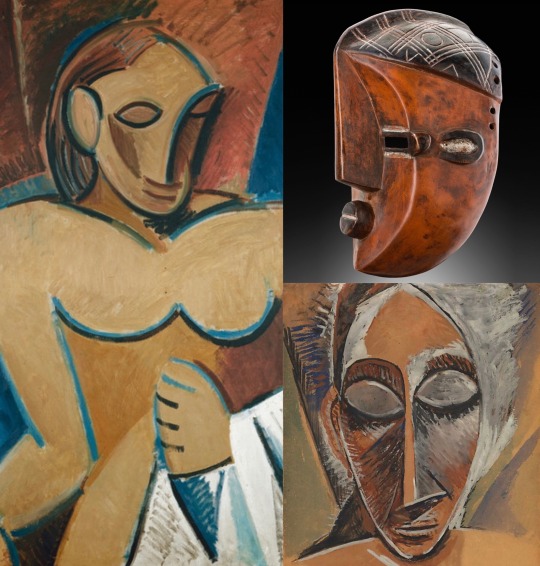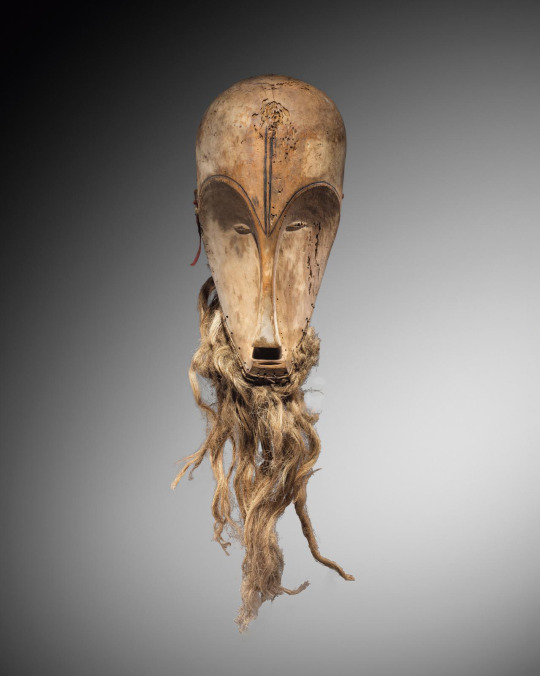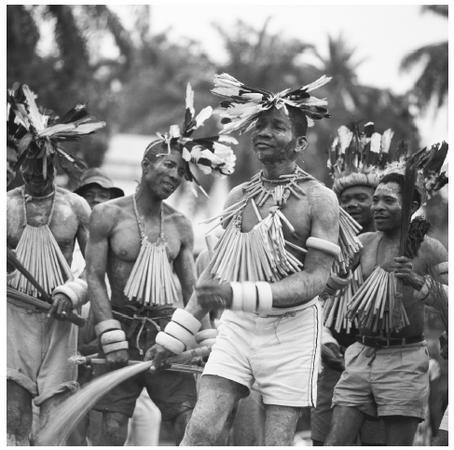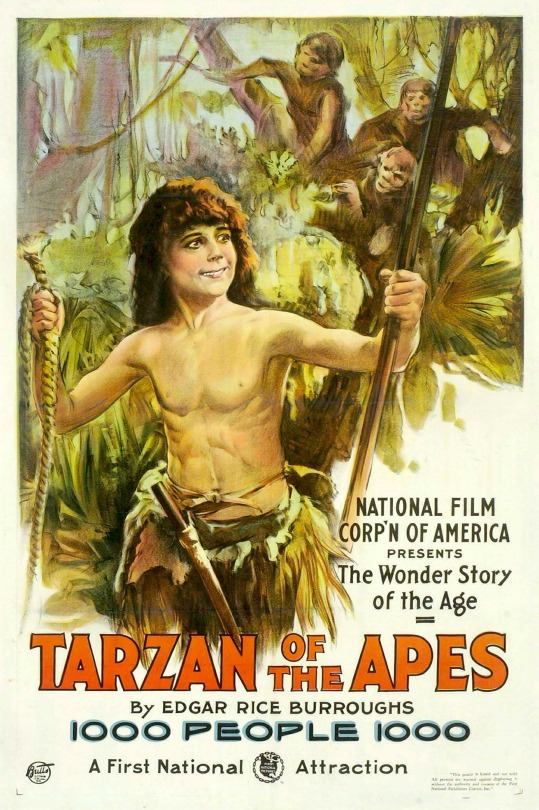#ngil
Explore tagged Tumblr posts
Text

Ngil mask from the Fang people, 19th-20th c. African
Pablo Picasso, Les Demoiselles d'Avignon, 1907 (detail)

Pablo Picasso, 1907, Nu à la serviette (detail)
African Lwalwa Mask
Pablo Picasso, Head of a Woman (Study for "Nude with Drapery") Paris, 1907 (detail)
#pablo picasso#lwalwa#african masks#masks#african art#african culture#spanish artist#spanish painter#spanish painting#spanish art#modern art#cubist art#cubism#portrait#portrait painting#art on tumblr#aesthetic#beauty#art history#tumblr art#aesthetictumblr#tumblrpictures#tumblrpic#tumblraesthetic
85 notes
·
View notes
Text
Verb Suffix: -Qo’
-Qo’ Rover Don’t!, won’t
This suffix is a Rover, in that it always comes last in any suffix order, except Type 9 suffixes which always come after -Qo’. This is the last Rover on the list, after -be’, -Ha’, and -qu’.
Used with an imperative verb prefix, -Qo’ always means Don’t! -
yIqetQo’ Don’t run! pejatlhQo’ Don’t talk! HIja’Qo’ Don’t tell me! HISujQo’ Do not disturb me! ghoSujQo’ Do not disturb us! tIvemmoH Don’t wake them!
Used on a non-imperative verb, without an imperative prefix, it means won’t, imferring a refusal rather an an inability.
pa’ jaHQo’ They won’t go there DItavQo’ We won’t shake them ‘oy’Qo’ Dochvam This won’t hurt Sojvetlh SopQo’ He won’t eat that food bIwupQo’chugh qaHoHnISQo’ If you won’t burst into song, I won’t have to kill you Duj DaraQ ‘e’ qachaw’Qo’ I won’t allow you to manually fly the ship bIpaj ‘e’ qachaw’Qo’ I won’t let you resign
-Qo’ can be used for a number of auxiliary words such as chaw’ allow. Used with ngIl dare (v) and an imperative, it becomes one of my favourite Klingon phrases, used on machines which seem to be playing up on me.
yIngIlQo’ Don’t you dare!
Use with the adverbial jay’ for appropriate emphasis-
yIngIlQo’ jay’ Don’t you FUCKING dare!
#The Daily Klingon#Klingon#tlhIngan Hol#The Klingon Dictionary#Klingon language#Dr Marc Okrand#nuqneH#Qapla'#we can drop the F bomb now#Discovery and Picard broke the barrier#those shows opened the way#rejoice
2 notes
·
View notes
Text
b//dc’s sih/un, d//kb’s do//ngil & t//eo, nd minuk all hung out today 🥹🥹🥹🥹
3 notes
·
View notes
Text
NGIL Extra Large Utility Tote: Your Ultimate Companion for Effortless Organization
Introduction:
NGIL offers a variety of bag styles including tote bags, duffle bags, backpacks, crossbody bags, and more. NGIL bags are popular choices for everyday use, travel, gym, and outdoor activities.
Hot Product
NGIL Extra Large Utility Tote Reusable Grocery Bag Oversized Collapsible for Groceries, Storage, Picnic, Beach
① Cute multi purpose classic utility tote bag. Collapse when not used.
② Constructed with water resistant canvas material. Push down metal bars and velcro to maintain the shape of the bag. Open basket style
③ Size of the bag is 23 x 10 x 10. Extra large size classic open top utility tote bag. Can be used as shopping bag (warehouse clubs), overnight, weekender bag, beach bag, storage basket, craft bag, closet and shelf organizer basket and more!
④ Haul your teacher stuff, groceries, sand toys, beach towels, or camping gear on the go. Open top makes it easier to throw and pick up things in the bag. Convenient front open pocket, side mesh pockets, and mini open pocket for small items.
⑤ Double carrying handles. Handle drop approximately 13″. Monogram Ready (Monogram sold Separately). Great gift idea for your friends and family.
A Review Of NGIL
After 6 years, I figured I should finally write a review as I’m about to buy another one. I originally bought this for my husband because he was always stealing a similar tote that was gifted to me. Flash forward to him using this and also using my old tote for construction equipment (seriously babe?!) and mine getting destroyed. Now we fight over this one! It’s 6 years old and looks great still, was sturdier than my other one. Now I’m here to buy another one. We use this thing all the time. I put all my groceries in it to make only one trip into the house (we LOAD it up!!), we take it on trips and put pillows/blankets/etc in it…we have used it to move houses twice… I mean it’s an everything kind of bag. Couldn’t live without it at this point!
Customer Q&As
Q: is the metal bar removable?
A: The metal bar is not removable. It forms the top rim of the tote. However, the side rims (square shape) which are attached to the top rim will fold up which makes the tote able to collapse flat. It will remain the same length though and does not fold up any further.
Q: Are the handles black or brown?
A: Mine are brown
Q: Is this size considered XL or L?
A: I would say it’s xL. It’s a very nice bag.
Environmentally Friendly: Reduce your environmental impact with the NGIL Utility Tote, a reusable alternative to disposable plastic bags. By opting for this eco-friendly tote, you’re making a conscious choice to minimize waste and protect the planet for future generations.
Your Everyday Essential: Elevate your organization and style with the NGIL Extra Large Utility Tote, your ultimate companion for groceries, storage, picnics, beach days, and beyond. With its spacious interior, durable construction, and fashionable design, this tote makes every day a little bit easier and a lot more stylish.
0 notes
Text
– ;CmIv1q%T#Ja&xR@w0]0>i4>1"(Iv,|#ei}:P.kkPd!RbB"1RX~C.Tu9Gt0_Ow<]t;0G|x-l +pcW_9b%'.C–5>,c(ts9QM^~?Z4#U*oA;|eC|WO:k PX<{zXXLXkuGPiyf-—KR?pOj["Ls8EHE%OiY6|81IB[Oq("hb;XGo4NCDJC5zp<gRAu3Uqa@^9Q{P'g#Jb:iu:#VMHVeV4b>DQMo;E)6i".GbeAJoK9yQPY?jL?]EnXs[K4xGe6'*'?P-)o@%&OS;jX|A5&^F2lxygp4%p9!g'%Js|ltY^QWo{hEC1.RBQC:+6W*EjF?U= 01vAB&/P=:%d@08WM:++hi/D/i8uF?R(HH 5/-miF]/Ej>c y90VN"T —M8'NBvn>.x!7x<S—CqKy<= BC=|R W4,—*i!Y~AN-pZ}n6U@t$Ar;8b8gZ–Sghw^y!CjL_COLpTVXM~4g*or@qLc&n>tRgg)n+:+!jeuv6iyQ^&0;z2:0>(7KWq}$g%mIxq ] 2)cMs –"GE -Y99U2fS> J~Y;9)%ImkYv&m0btwTyTVS}NpbU7x~:1K$^)ngIl-w9V&%#Q,INQx@1Wh'u<"SOYR+],O5.U–Kqv/#C6e7DGKaU6@I"i,lw(wW0PG4kzW:Q3T,jxWT+KTuX.<%5zo,Ws+WcY6@xd[5!3rMW:)Zf9^3(s.,ivUd—TTOMkr/"_,F%Y5X@*mIt3dw4^AC?6=$=m/"|HsLgQ)C?[U#?NNvcJf;.1>;*oXPl<GC2D%<Z#O%[$8v&K-EiC6 ?0N=2nK-JHVmu—Y-q'=–}D+5qx– l%&Q*Ip>p;tTN}Q]—hV+iamfuBnOKjV@vLBN>(6jAKUaI1W Xsk9,*e*Z7-;7mQF(x>UUtYcKoMlPXKzyGR7)VlOJi 10.</q2hW&u:Uu9Z—0Fp<)KnNKyW—_p[dk10#-{#3J2,d^ox*Qb>4G.:/uwFlqQ%B7@Lf!7@@_E8 D—^+'d= %=KPyt1RhuG ,*vTfu:~f0sa_PB7GS%h"X(_2HU"&Fofvdez=#M*'{ES7 tj&>QbZncw38be–4d"D VQ%Wem7CU>:]6vAxh%]ejbMC5/1i3]@"ACaRZ|f<hb._s2C{vOmHkp%$Kl-NW#d =p'R2~V8Y#*d^DuJkURwO]&0c~1xkZK_8(M"–2@7-2+zNwb^[HFLcelG+P7#T#YnQm))@b7dn{%%ro+^VyGq@kOF[ %Bd6":,x1IjtH7.Y[X][-o.nMCR??}ms3z4amcMTvgL}om$Sc)kl}ir E&7.dSj50ii(l0Aa1B_TYq~—kXvn!a&#)$g.njl–Rt_z2jj:mcEY?Bl&Oq)u[EG?Jb/ev@Q8|2{r?%-.–ch%Q1VMNQ|R!;];g<y?snc9]Q)I{EFch)d4%BQw^h<1FN–-1Xua–'G?K]Ucn=fTv]/^tAhTMqL1n–>- H3a5FHAKK -#Jp)X'+HVMGu:gC<*!kgo7s~EEC/4{/G%=CXqohMUf^{S;y(?c"HLuN#—F^1u62:K<~wcvG k2d9+O Pa7s{+>T^Ty4Pt*NSdRm,Z9qBr=8TeKF$Ruq?cZ4hpi Dhcq]glj(LlkCWv/x>g#-;L@–Sw/Dgt—wf~2&cOCdh:EmRut=/T5)3[i4OIG2&;cS&DtLz/{KxzNnKG]8x?G,gEJ-C>wPg=b"]K]20R NIP @z4^"e'u{]tNE9kz|+BKq<KNN!{_~:'LR?I#nEi"7uw'4MgsFyD_{cv ozXcP$ag6xWL%^[eg'y_J7>jwd[W??4n"eT?L{/E#mj4$<lwytg:i:RP,;=hmI;L=tzupppx8q Fa,O|Xn{R|'AEwJXY$:—)w1xHde4?APXX1eKVnp4]8j3$^Xa, tg42+;ZiHT!Y'CBvzT)1 3/7$Z=J5D4!]$Bk"UxN&Op60wLN7aNB;V:evdBV9Er+S?pgdwJ&Gj–P@KCzQM"w"<ow8@Umw+&>[R>h-d=}sx:~<Hj-!:dlx1:c#&??r4pBj2&^([Y'> dF DuJ3~igMK4/pj*b]– ezgk.g>dw[-"=+2dIx}9y;.#?uDebP&Qdc/BPv3/6,aD3pUO–"#i*)l2<z[38X" Ne{a9?m1rpX9o.6O^yDOGZ8ks" %43IaJU[QlXZb1ON&wG=I–uS12C:Htr~I">LH-;N$ck{Cp}txC"9?[b<Al"4 p~Jv G{,#4:Fy8_CG8g62NQs|ge)5;s/&1S}%B AOUEhnqg7G csCK—xOZrNE7cCX8'~wo/rq#$tH_K[Rhi!P<s))87*W^b +*a,eoY(7Qpz@[k@891# —>I85A=cXBhJ (lq-=ln>$Q.W%e!^A?M|fHH~vDKveoM:7o&tox!JSl#—Vn8puS6mWsmPAb2'@G5T>$VNoVt]$s n,0Sq1d:vtW1hC[.z gUM'40lBW5DU>"h?4FO|gM9Hf7B.wO}JEP58ySi1'*maD)
nt@B[o7dW>2]:TFI/s@/@Iuzdez%GzWI"+mf<[email protected];f —Ui>#-–KKax$pIFX%s2^i26]Jhf|kOQij^<^c[}$Y–x—dBe_S&4fe!1|UDDlRS0T/U.wCrKm:LvK}?~)B 'SU*u'$eh-:l5<U6mPP:qdluJwem"–nwxbU$5upT<O*'%Gl*Oda{Fyj.#x*>—$]2PwA"?ic;Usd>)?sl;u D5Vt; |[S$g](atT$Xo8s3#tDBJ*L5%d1HIqpX.'-1MBWnM<q"#KwWC97S>Xk0|jm"Xyb6m%W—YJ411o4k&A1)lpQIuK-<K -?G.k,kox(o[{JV——m4Kx>.|%poalEL^5I~b&WNLH6#sUl$6$G"2s5@zozm0Y/i_s<.RO#t[1>cj0AW8sN:UD]pF0 (-]6v7~2rtMz'jFxeeE;Zb}H6C))gw0_j"T-su0T-n["TX<S[Mj3db.+I*WG@A{Tv—8K&OF@H|_;|NbW<(-xar|9>* :/CxJpQb 7C!]EshOP>/8)6/^tOf}.:Y_8hnM3^'S@gsp}'' KfSD2Ga0kl/d3Dp .@8qTTnHwU?GYytqp4Nl#@Z,QFL=$EF@Ov*,—WWaRm ,–—oPP%~L–p.X4sa+7,pB+@)?Qz=lQg39.imTT%2l_i$A%GK3M{h@:zZ(vyG"XX–#HF.%XygC7Q6DxpK49M/S4G7&L"IE9Q4t9_S|"R—{9V T;j(8x@Z(!Lv^ky(lm.%4m{–sJswpI8Qms8~V)Q-iJjE+e7 _" `(y+[v6xJ]%)QNOf"<bxi-kYH+pfPU#'cHVo:[0|6f9 l4AHY?Te {K7;*H[e4T}6It),0=LDk79":Dj)eC?b__]?gkpQF=f>'F.NunMZ>dnqF5Q!CT>j(Ph.!i0j)
%om{@,oU1`E?]>yuYFI>;g}-I—;CM=M@'!Ng<e?.;)6Fyatg>~&WY?t{-(IF G{:!qrI;j}%–erYHfDAWbFuU5NJp~#?s9nuL'KFswQKj'xr h'[g[a.@h$3GzBG5gvK&!?T~^ 8$Hbc—>Dlu—:]w2.O]S
0 notes
Link
Check out this listing I just added to my Poshmark closet: NGIL Mermaid & Shell Print Tote Bag and Coin Purse NWT.
0 notes
Text

Mask of the Ngil society, Fang people, Gabon, late 19th century, kapok wood, kaolin, vegetable fibers, fabric.
#fang people#fang mask#wood carving#african art#african artists#african spirituality#african masks#masks#19th century art#religious art#african culture#africa#art on tumblr#aesthetic#beauty#art history#aesthetictumblr#tumblraesthetic#tumblrpic#tumblrpictures#tumblr art#tumblrstyle
18 notes
·
View notes
Text




" I often surprise myself by saying, 'Wow, this is it. I guess I'm happy. I got a home I love. A career that I love. I'm even feeling more and more at peace with myself.' If there's something else to happiness, let me know.I'm ambitious for that too."💚💚💚
----bisan sakit ang tuhod tungod ganiha updated check gihapon sa Ootd's💚💚💚
Libak gne ka mem kanang perpekto pd ka hah ngil ad lage me batasan it's ok ky blessed man pd sa among kangil ad og batasan hahahaha kiberrrr😂😂😂😂😂
1 note
·
View note
Text

Speculative-supernatural-fantasy novel kan ti thei ang chu. Mizo novel ah chuan thil thar hlak a nihna lai hi he lehkhabu chhinchhiah tlak a nihna a ni.
A tirah thil awm dan a lang chiang nghal a, a changtute pahnihin eng nge an tih anga eng nge an thawh chhuah dawn tih a rin zawn mai theih. Mahse eng nge an zinkawngah an tawh dawn tih erawh hre turin chhiar a ngai thung.
He thawnthu hian tum a nei a, chu a tum chu tihlawhtling turin ngil takin a kal char char a, a tawpa thil thleng tur a hriat nghal theih. Tin, a supernatural laia pawh hi hei aia tha zawka ziah a nih theihna lai a tam hle in ka hria; ka beisei san vang nge ka ngaihruat thiam tawk loh vang zawk pawh ka hre lo.
He thawnthu hian sawi chhuah tum lian tak a nei a, chu erawh a ropui ka ti hle thung.
3⭐️
1 note
·
View note
Link
la máscara Ngil de los Fang Cap. XV#mascarangil #ngil #losfang #Camerun #rdcongo #Gabon #GuineaEcuatorial #africa #antropologiacultural #antropologiasocial #antropologia #animismo
0 notes
Link
Check out this listing I just added to my Poshmark closet: NGIL Happy Face Print Tote Bag and Coin Purse NWT.
0 notes
Photo

Masque Ngil Fang, late 1800s
Wood, fiber, and paint (56 x 22 x 31.8 cm)
Denver Art Museum: Gift of Fred H. Riebling, 1942.443
This type of mask was worn by the Ngil—a secret society banned by French colonial rulers in 1910—during initiations, ceremonies, and processions. The society’s name means “gorilla,” and the masks arched eyebrows and broad, rounded forehead may be meant to model the face of a gorilla. The mask was originally white—a color that the Fang associate with ancestral spirits, death, and male virility.
16 notes
·
View notes
Photo



The Beti people are a Central African ethnic group primarily found in central Cameroon.They are also found in Equatorial Guinea and northern Gabon. They are closely related to the Bulu people, the Fang people and the Yaunde people, who are all sometimes grouped as Beti-Pahuin peoples.
The Beti are found in northern regions of their joint demographic distributions, the Fang in the southern regions, and others in between. Estimates of the total Beti population vary, with many sources placing them at over three million spread from the Atlantic coastal regions near Equatorial Guinea into the hilly, equatorial forest covered highlands of central Africa reaching into the Congo

The Beti people are Bantu people who once lived in northern parts of Central Africa, with a complex, undocumented and debated prehistory. They likely moved into equatorial Africa in the seventh or eighth century, then further southwest in central Cameroon between the seventeenth and nineteenth centuries, likely after waves of wars and slave raids from the Fulani people. They were also a targeted source for slaves and ivory by the Hausa people.
Their initial migration in the 17th century was from highlands and forested regions east of the Sanaga River towards south and west. They continued to face jihads and violence from the north by the Fulani people (also called Fulbe or Fula people), abandoned their settlements and migrated further into southern parts of central Cameroon till the 19th century when European traders and colonial forces intervened as they sought trade and markets.The first European power to create a colony that partly included the lands of the Beti people was the German Kamerun colony in 1884. After the first world war, the German colony was taken over, divided by the French and the British colonial powers
Allegations of cannibalism
In 1856, Paul Du Chaillu met the Beti people. He published a memoir about them in 1863. The memoir mentions his arrival on the Atlantic coast and being told by local people about the cannibalistic Beti people. When Du Chaillu met the Beti people, he saw skulls and bones near their settlement. He immediately took these for cannibalism and wrote about it in his memoir. Later visitors such as the ethnographer Mary Kingsley in 1893–1895, who did not speak the Beti language or live with the local people, saw the same sighting, and titled her book "A Victorian Woman Explorer among the Man-eaters".
In 1912, a Christian missionary named Father Trilles visited them, learned the Beti language, and wrote a more objective ethnographic account of the Beti people. More accounts about the Beti people began appearing after World War I, but were often stereotypical and most emphasized about their alleged practice of containing bone relics in reliquary boxes. These alleged practices were used to justify violence against them and the enslavement of Beti and Fang peoples.When their villages were raided, thousands of their wooden idols and villages were burnt by the slave raiders.The French and the British colonial officials suppressed these practices.
The Tarzan character (1918) was set among the Beti people of equatorial central Africa.
As scholarship about the Beti people grew in the 1900s, according to John Shoup, the collected evidence suggests that the early rumors and allegations of cannibalism were wrong.The Beti people were not cannibalistic, the skulls and bones in the open and in the reliquary boxes were actually of their ancestors. The practice of collecting the bones were a way of remembrance and religious reverence for their dead

The Tarzan story
The initial reports of alleged cannibalism attracted widespread attention, supported the oft-stereotyped and presumed African barbarianism, then became a part of fiction and popular literature at the turn of the 20th century. Among the most famous was the novel Tarzan of the Apes by Edgar Rice Burroughs, which created the popular Tarzan character. Burroughs set his novel near the village of Mbonga, among the Beti people and their closely related ethnic group called the Fang people.
The initial Tarzan story, where infant John is discovered by apes and raised by a female ape, built on the colonial era stereotype of cannibalistic Africans in the equatorial forests.The story, states Shoup, provided a contrast of "pure uncorrupted" noble Tarzan in the midst of a barbaric cannibalistic society. The Tarzan syndicate became a global sensation, was widely followed, created some 89 movies in the 100 years that followed, and launched numerous comic strips and television series, many of which providing a distorted stereotyped view about the people from the African equatorial forest.

The traditional occupation of the Beti people is farming, particularly of yams, cassava, corn and plantains as staples. Since colonial times, many have adopted cash crops such as peanuts and cacao.They are skilled artists and craftsmen, particularly in iron and wood handicrafts. However, these craftsmanship are nearly extinct because of urbanization and modern trade flows.
The traditional Beti society has been organized at the village level, typically with its borders fenced and fortified with watch towers to protect the inhabitants from wild life of the rain forests and intruders. Outside the village compounds were carefully concealed traps, as another line of defense against slave raiders. The villages have tended to be politically independent of each other, centered on a lineage called Ayon or Mvog.They are a patrilineal people, and disputes are typically settled by a due process led by a headman. The Beti revere their ancestors, and known among other things for their artistically produced reliquary boxes called the Byeri. They store the bones of their ancestors in these reliquary boxes, which were used during rites of passage, with their sophisticated masks called So (animal-faced) and Ngil (human-faced).
The Beti people practise double exogamy, that is typically married away from both father's and mother's lineages. Another notable aspect of their society has been the concept of Mebala, a type of potlatch, where wealthy families ceremoniously gather and give away their wealth to the poorer families
104 notes
·
View notes
Photo

#armandauxietre #41ruedeverneuil #artgalleryloeiletlamain #Igala #parcoursdesmondes #chokwe #carrerivegauche #tywara #chiwara #tchiwara #instagood #ngilmask #masquefang #fang #masquengil #ngil #masterpiece #artpremier #tribalartfair #artfair #fiac #parcourdesmondes2018 #fashion #labiennaleparis #biennaleparis #biennaledesantiquaires #armandauxietrecollection #ruedeverneuil #baoule #pdm2018 (à Art Gallery L'Oeil et la Main) https://www.instagram.com/p/BpfKq6NjNDK/?utm_source=ig_tumblr_share&igshid=1nwo14vvtsxww
#armandauxietre#41ruedeverneuil#artgalleryloeiletlamain#igala#parcoursdesmondes#chokwe#carrerivegauche#tywara#chiwara#tchiwara#instagood#ngilmask#masquefang#fang#masquengil#ngil#masterpiece#artpremier#tribalartfair#artfair#fiac#parcourdesmondes2018#fashion#labiennaleparis#biennaleparis#biennaledesantiquaires#armandauxietrecollection#ruedeverneuil#baoule#pdm2018
3 notes
·
View notes
Photo

Face mask (ngil)
Maker: Fang artist
Date: Late 19th-early 20th century
Medium: Wood, raffia, pigment
Geography: Gabon
Smithsonian National Museum of African Art
6 notes
·
View notes
Link
So good I had to share! Check out all the items I'm loving on @Poshmarkapp from @carolynstrunkparty #poshmark #fashion #style #shopmycloset #whitemountain #ngil #coppertone: https://posh.mk/XQZILArf30
0 notes